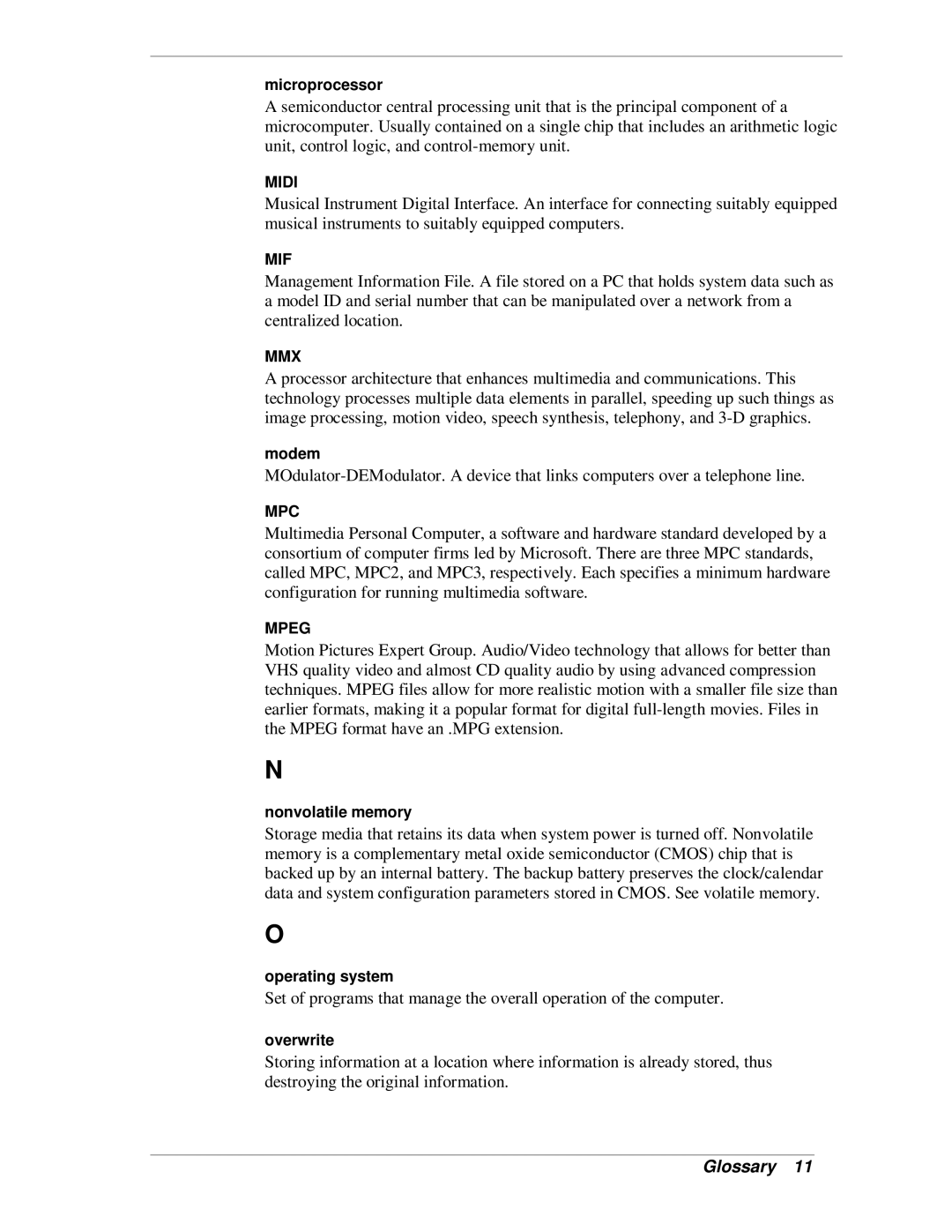
microprocessor
A semiconductor central processing unit that is the principal component of a microcomputer. Usually contained on a single chip that includes an arithmetic logic unit, control logic, and
MIDI
Musical Instrument Digital Interface. An interface for connecting suitably equipped musical instruments to suitably equipped computers.
MIF
Management Information File. A file stored on a PC that holds system data such as a model ID and serial number that can be manipulated over a network from a centralized location.
MMX
A processor architecture that enhances multimedia and communications. This technology processes multiple data elements in parallel, speeding up such things as image processing, motion video, speech synthesis, telephony, and
modem
MPC
Multimedia Personal Computer, a software and hardware standard developed by a consortium of computer firms led by Microsoft. There are three MPC standards, called MPC, MPC2, and MPC3, respectively. Each specifies a minimum hardware configuration for running multimedia software.
MPEG
Motion Pictures Expert Group. Audio/Video technology that allows for better than VHS quality video and almost CD quality audio by using advanced compression techniques. MPEG files allow for more realistic motion with a smaller file size than earlier formats, making it a popular format for digital
N
nonvolatile memory
Storage media that retains its data when system power is turned off. Nonvolatile memory is a complementary metal oxide semiconductor (CMOS) chip that is backed up by an internal battery. The backup battery preserves the clock/calendar data and system configuration parameters stored in CMOS. See volatile memory.
O
operating system
Set of programs that manage the overall operation of the computer.
overwrite
Storing information at a location where information is already stored, thus destroying the original information.
